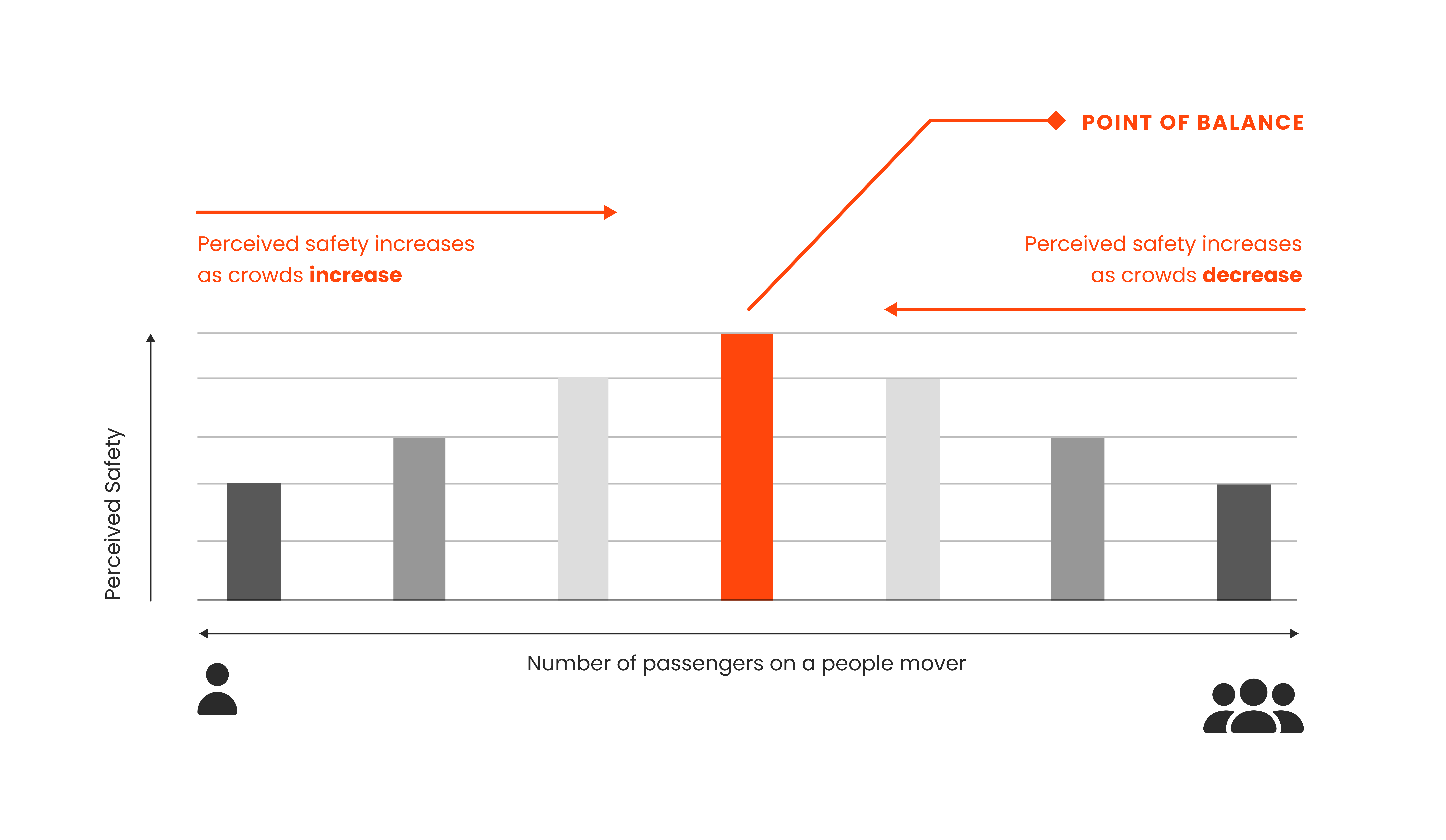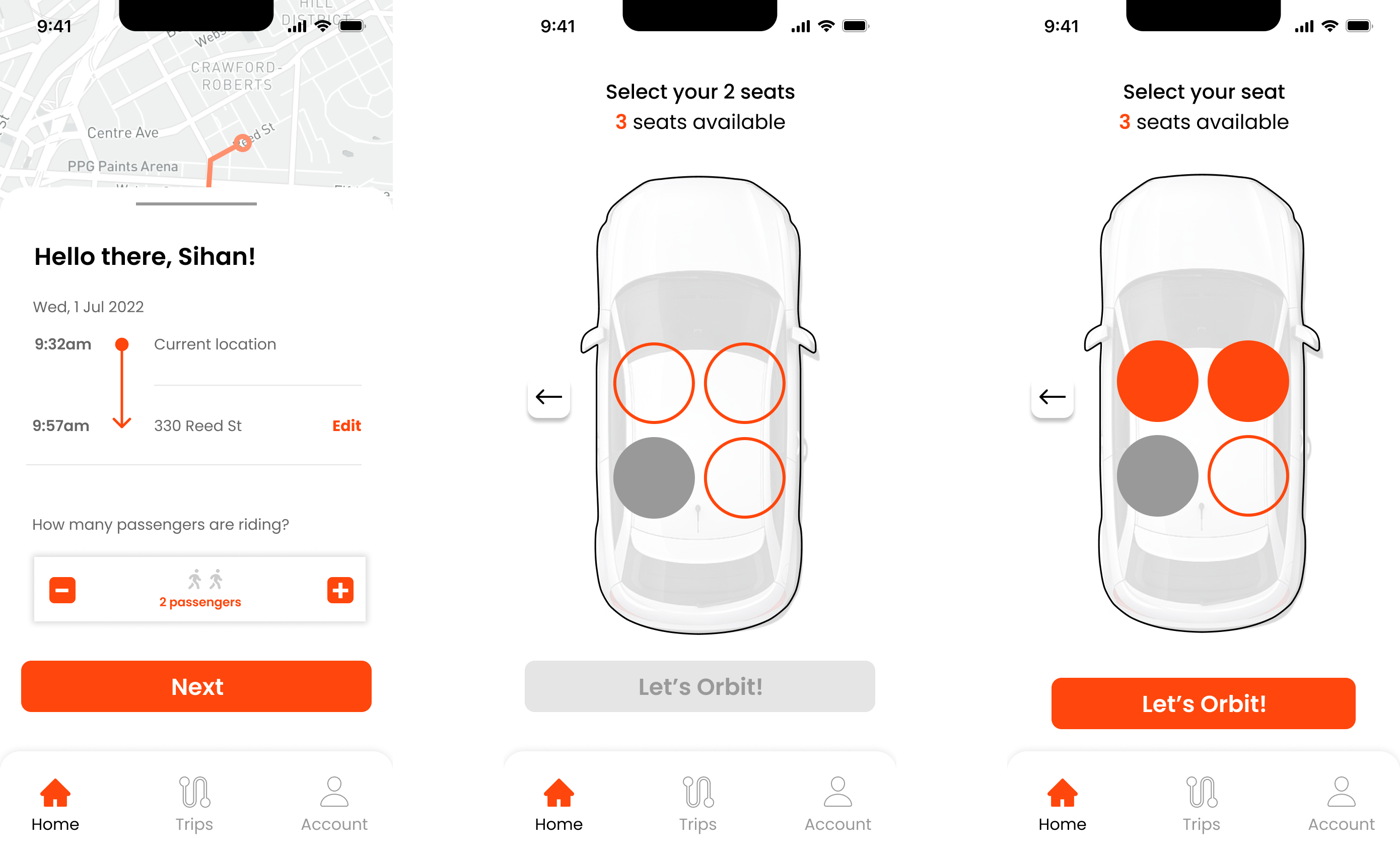
As observed in ride-alongs and user interviews, transit riders play a critical role in a passenger’s comfort and perceived safety in transit, often more so than interactions with the vehicle operator.
A people mover’s layout and attendant system should consider passengers’ interest in and comfort with interaction with other passengers and adapt its environment accordingly.
How many fellow riders are in transit impacts passengers’ perceived sense of safety on their journey.
While passengers often mention a sense of safety in numbers, there is also a threshold at which a crowd raises concerns in today’s current public health climate.
“You're always squeezed in with a lot of things and especially with the amount of people that are on the bus, because it gets really hectic and people are squished together ... I think it should be more comfortable because you can get a lot of health issues from not being comfortable." - Passenger | Diary Study

People movers should consider occupancy levels when determining how to support or deter inter-passenger interaction.
A people mover’s seating arrangement and systems should take into account that different passengers have different thresholds for comfort and safety in relation to fellow riders.
The seating orientation of a people mover could adapt to passengers’ tolerance for fellow-passenger interaction.
Interaction points prior to boarding might inform passengers of occupancy levels, providing them with enough information to determine their comfort level with boarding the people mover, or allowing them to reserve the entire vehicle if they feel uncomfortable sharing that day.
